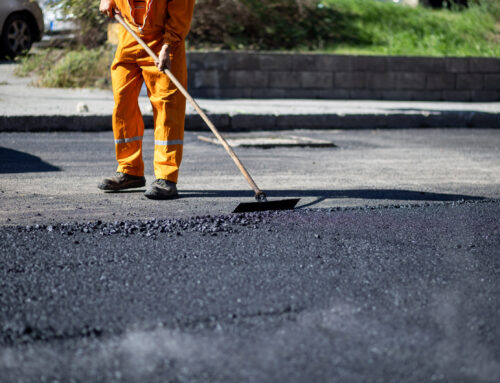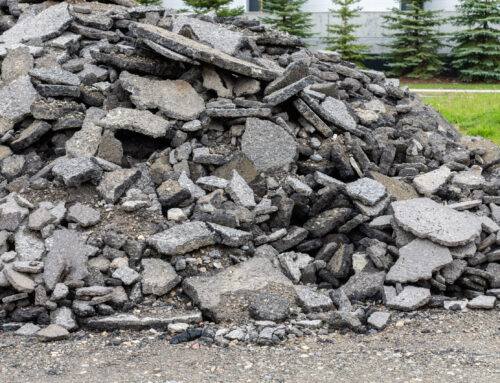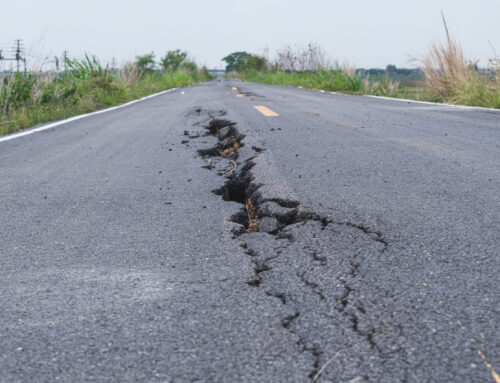Asphalt is one of the most durable and cost-effective paving materials available, making it the preferred choice for roads, parking lots, and commercial properties. However, heavy traffic can take a toll on asphalt surfaces over time, leading to cracks, potholes, and overall degradation. Understanding the impact of constant vehicle weight on asphalt and implementing preventative measures can help extend the lifespan of your pavement and reduce costly repairs. This time on the Sunrise Asphalt blog, we’re talking all about how heavy traffic takes a toll on asphalt surfaces.
The Effects of Heavy Traffic on Asphalt
Increased Wear and Tear
The weight of vehicles, especially large trucks, buses, and heavy machinery, puts significant stress on asphalt pavement. Over time, this repeated pressure can cause the surface to deteriorate, leading to:
- Rutting: Deep grooves or indentations form in the wheel paths due to constant traffic.
- Cracking: Repeated pressure from heavy loads causes small cracks that can expand into larger fissures.
- Potholes: If cracks are left untreated, water infiltration and freeze-thaw cycles can cause potholes to develop.
Structural Fatigue and Base Layer Damage
Asphalt surfaces are supported by a strong base layer beneath them. When subjected to frequent and heavy loads, the base layer can weaken, causing the pavement to shift, sink, or crack. Structural fatigue occurs when the asphalt loses its flexibility and begins to break under excessive weight.
Surface Deformation and Drainage Issues
Constant traffic can cause asphalt to shift or warp, leading to uneven surfaces. Additionally, heavy loads can compact the pavement excessively, altering the drainage patterns and leading to water pooling. Water accumulation is one of the biggest culprits of asphalt deterioration, as it seeps into cracks, weakens the sub-base, and accelerates the formation of potholes.
How to Reinforce Your Pavement Against Heavy Traffic
While wear and tear are inevitable, there are proactive steps you can take to reinforce your asphalt and ensure its longevity.
1. Invest in a Strong Base and Proper Asphalt Thickness
The foundation of any asphalt surface is crucial for its durability. For areas that experience heavy traffic, such as highways, trucking routes, and commercial parking lots, it’s essential to:
- Use high-quality aggregate for the base layer.
- Increase the thickness of the asphalt to accommodate heavier loads.
- Properly compact the sub-base to prevent shifting and settling.
2. Use High-Quality Asphalt Mixes
Choosing the right asphalt mix can make a significant difference in how well your pavement holds up under heavy traffic. Some options include:
- Polymer-Modified Asphalt (PMA): Enhanced with polymers to improve flexibility and durability.
- Superpave Mix Designs: Engineered to withstand high-traffic conditions and varying temperatures.
3. Implement a Regular Maintenance Plan
Routine maintenance can help identify and address minor issues before they become costly problems. Consider the following maintenance strategies:
- Sealcoating: Protects the surface from oxidation, moisture infiltration, and traffic wear.
- Crack Sealing: Prevents water from entering the base and causing further damage.
- Patching and Repairs: Quickly addressing minor potholes and surface damage prevents them from worsening.
4. Improve Drainage Systems
Proper drainage plays a crucial role in asphalt longevity. Without effective drainage, water can pool and seep into cracks, accelerating deterioration. To enhance drainage:
- Install sloped surfaces to direct water away from high-traffic areas.
- Use permeable asphalt in select locations to allow water to drain naturally.
- Regularly inspect and clean catch basins and drainage systems to prevent blockages.
5. Restrict Heavy Loads and Control Traffic Flow
If possible, limit excessive weight on your asphalt surface by:
- Designating truck-only lanes or specific parking zones for heavy vehicles.
- Installing weight limits and posting clear signage for heavy-load restrictions.
- Encouraging a balanced traffic distribution to avoid excessive wear in specific areas.
Heavy traffic is one of the leading causes of asphalt deterioration, but with proper planning, materials, and maintenance, you can significantly extend the lifespan of your pavement. Investing in a strong foundation, choosing the right asphalt mix, implementing routine maintenance, and improving drainage can all help mitigate damage from constant vehicle weight. By taking these proactive steps, you can ensure a durable, long-lasting asphalt surface that stands up to even the heaviest traffic loads.
If your asphalt surface is showing signs of wear due to heavy traffic, call Sunrise Asphalt today to assess the damage and get the best solutions. With the right approach, you can protect your investment and keep your pavement in excellent condition for years to come.





